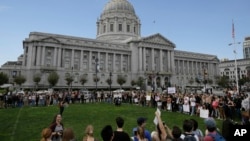Californians made it abundantly clear Tuesday night that they didn't want to see Republican Donald Trump in the White House, overwhelmingly voting for Democrat Hillary Clinton.
Now, disappointed with Trump's victory, they are seeking another way out.
A group of secessionists is taking advantage of post-election discontent to push for 'Calexit', the new name for the prospect of California seceding from the U.S. It is modeled after "Brexit," Britain's historic decision to leave the European Union.
Discussion of the idea exploded Wednesday on Twitter, where tweets with the hashtag #calexit rolled in at hundreds per minute all day. Many — often paired with the hashtag #notmypresident, in reference to Trump's election — backed the movement.
I cannot identify with bigotry, sexism, xenophobia," one Twitter user wrote. "I'm no longer American, I am Californian."
Silicon Valley venture capitalist Shervin Pishevar, who is Iranian-American, said he was willing to bankroll a secessionist campaign. He said the new nation would be called New California.
California is the country's most populous state, making up 11.6 percent of the U.S. population, according to mid-year figures from the U.S. Census. If it were a separate nation, it would be the 35th biggest country on Earth, according to U.N. data. It has the sixth largest economy in the world, according to 2015 global GDP figures.
But while the U.S. Constitution specifies how a state can gain admission to the United States, there is no stipulation for the reverse.








